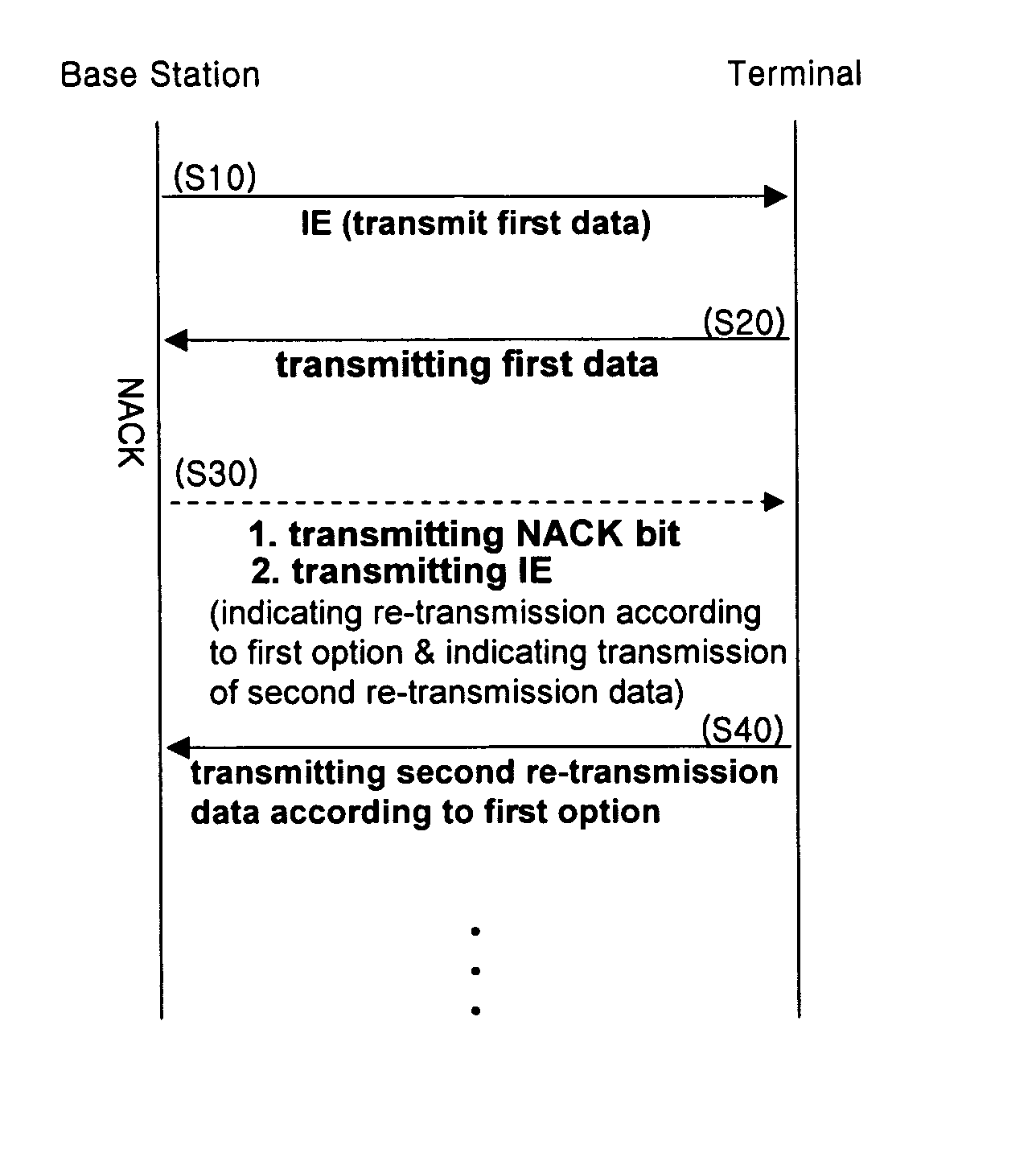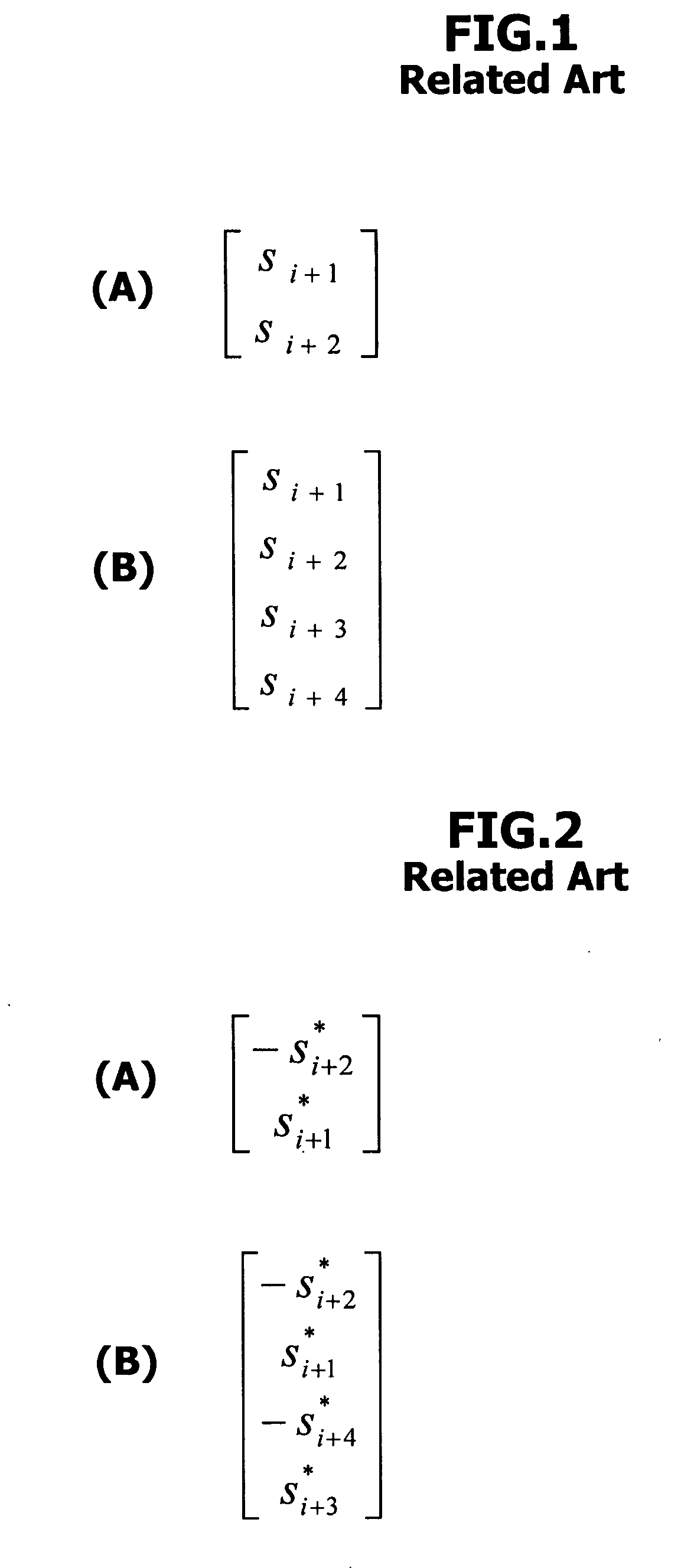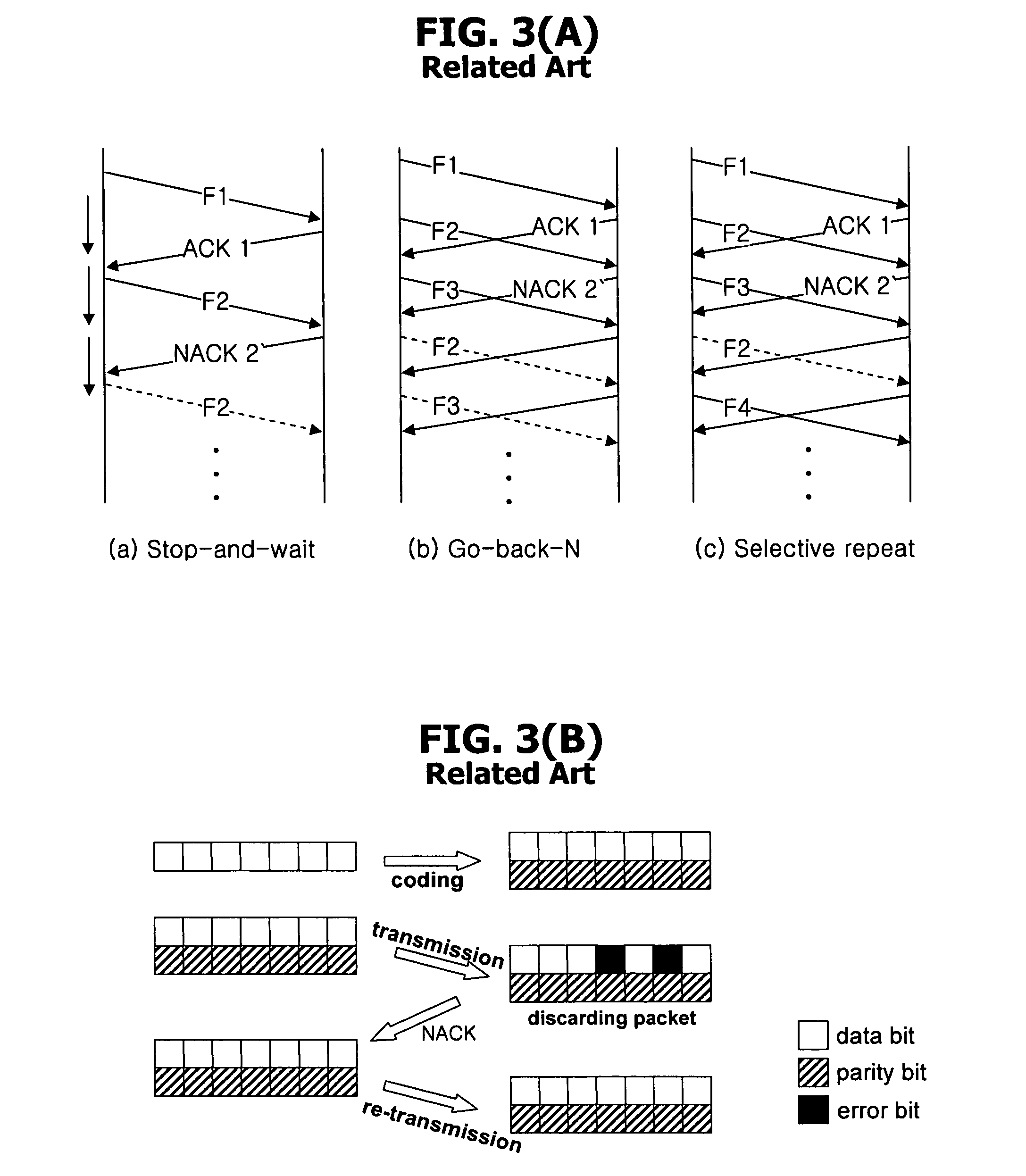Packet transmission in a wireless communication system using multiple antennas
a wireless communication system and packet transmission technology, applied in wireless communication, data switching networks, wireless communication, etc., can solve problems such as radio resource waste, packet re-transmission using two or four transmitting antennas may have problems,
- Summary
- Abstract
- Description
- Claims
- Application Information
AI Technical Summary
Benefits of technology
Problems solved by technology
Method used
Image
Examples
first embodiment
[0082]FIG. 9 shows a data re-transmission procedure in accordance with the present invention. As shown, the base station informs the terminal about the data to be transmitted via the Information Element (IE) in order to receive a signal of the terminal (step S10). Then, the terminal transmits corresponding data to the base station (step S20) and the base station receives such data and determines whether the received data is an ACK or a NACK.
[0083] If the received signal is a NACK, that is, if the received data has an error, the base station transmits a NACK signal and an IE to the terminal (step S30). In such case, the base station may inform the terminal, by means of the IE, about the NACK signal by using a single bit and about which re-transmission vector is to be used. Then, the terminal performs re-transmission accordingly (step S40).
[0084] The second and third embodiments of the present invention show situations of a downlink HARQ data transmission.
second embodiment
[0085]FIG. 10 shows a data re-transmission procedure in accordance with the present invention. The base station transmits first data and an IE to the terminal (step S110). Here, the IE has a default value representing a particular re-transmission option.
[0086] After the initial (first) data arrives at the terminal, if the data has an error, the terminal selects one of the re-transmission options and transmits to the base station, a NACK signal according to the selected option (step S120).
[0087] Upon receiving the NACK signal from the terminal, the base station includes the received NACK option information into the IE in order to inform the terminal about which option the NACK signal (received by the base station) belongs to, and transmits the IE (containing the received NACK option information) when sending the subsequent (second) re-transmission data. Here, the NACK option information is used to provide re-confirmation to the terminal regarding the signal that the terminal had tra...
third embodiment
[0088]FIG. 11 shows a data re-transmission procedure in accordance with the present invention. The base station selects a NACK option (number) that is to be transmitted by a terminal, and then, transmits such to the terminal (step S210). That is, the base station determines a NACK signal of a certain option to be transmitted by the terminal if the data contains an error, and adds the determined option information to the IE. The base station then transmits the IE to the terminal together with the data.
[0089] When the data from base station arrives and if such data is detected to contain an error, the terminal transmits to the base station, the NACK signal of the option that had been designated the base station (step S220). Thereafter, when different data is transmitted, the base station includes the previously determined option information in the IE and transmits it to the terminal (step S230).
[0090] The following Tables show exemplary formats of the Information Element (IE) that ma...
PUM
 Login to View More
Login to View More Abstract
Description
Claims
Application Information
 Login to View More
Login to View More - R&D
- Intellectual Property
- Life Sciences
- Materials
- Tech Scout
- Unparalleled Data Quality
- Higher Quality Content
- 60% Fewer Hallucinations
Browse by: Latest US Patents, China's latest patents, Technical Efficacy Thesaurus, Application Domain, Technology Topic, Popular Technical Reports.
© 2025 PatSnap. All rights reserved.Legal|Privacy policy|Modern Slavery Act Transparency Statement|Sitemap|About US| Contact US: help@patsnap.com



